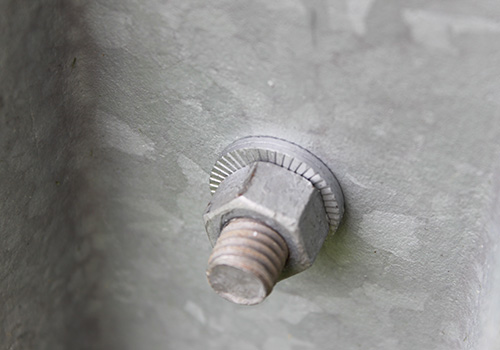The initial reaction to fastener failure is often that the bolt or nut must have been quality but more often than not this is not the case and it is some other factor that has contributed to the fastener failing.
There are many factors that could contribute to bolt failure in the field so it is essential to understand the full make up of the bolted joint to be able to select the right solution.
The word Pre-Load is used lots in the Fastener Industry but the actual meaning of it and the importance are not always fully understood. It was for a few years as a Mechanical Engineering Apprentice that I was hearing the term pre-load but never really had it explained to me in simple terms. This blog is designed to try and explain this in very basic terms to help with the understanding of why some so-called bolt securing products simply cannot work or have a negative effect on the joint.
The best way to think of a bolt is that it is a like a very stiff spring and to visualise exactly that when you tighten it up. When you apply a force to the nut it will extend the bolt like a spring and when you loosen it, it will return back to its original size. This is providing you have not stretched it too far and past its elastic limit known as its yield point.
The load that the bolt applies in returning to its original position is known as the Pre-load which is simply the clamping force in the joint.
The reason it is called Pre-Load is because that is the load that is already in the joint once it is tightened so Pre (Before) Loading is applied. An example of this would be if a bolted joint was designed to have a load of 10KN applied to it then you would design the bolt size so that it would apply more than 10KN and say 15KN once it is tightened up.
This way you can be assured that the bolt will maintain the joint within its capacity but it will also not have the effect of cyclical loading where if the bolt could still stretch under loading it would potentially fatigue overtime.
The pre-loaded joint not only provides a much better bolted joint but it protects the main fastener and extends its life providing it does not work loose from any external effects such as dynamic loading or vibrations.
The traditional methods such as nylon inserted nuts, pre-vailing torque nuts and spring washers can not guarantee that the fastener will not come loose due to the way they work. The friction-based products like the Nylon inserted nuts and pre-vailing torque nuts eliminate the potential use of a lubricant on the joint which is another way to improve the joint and get better performance, see our blog on lubricated joints.
The way the WL Series Wedge Locking washer works means that you can have the speed of installation as a normal free running bolt and nut, the ability to use lubrication on the threads and finally a securing method that is guaranteed to maintain the pre-load.
The major benefit the WL Series Wedge Lock washer has over the other methods is the fact that it has a positive connection to all parts of the joint. This is achieved with the radial teeth on the outside of both halves of the washer pair.
On a single sided bolted joint it has a positive contact to the underside of the bolt head and substrate and on a through bolted joint it has the same bolt head and substrate connection on one side as well as connection to the other substrate on the underside of the nut. The only way the connection can rotate loose then is by the washers through the centre of where they have a smooth surface and the cams start to work. When the washers try to separate they have to climb up the cams which are design to be steeper than the pitch of the thread on the fastener making it physically impossible without intervention to untighten them.
See our video for more detail about this and to see the performance for yourself.




